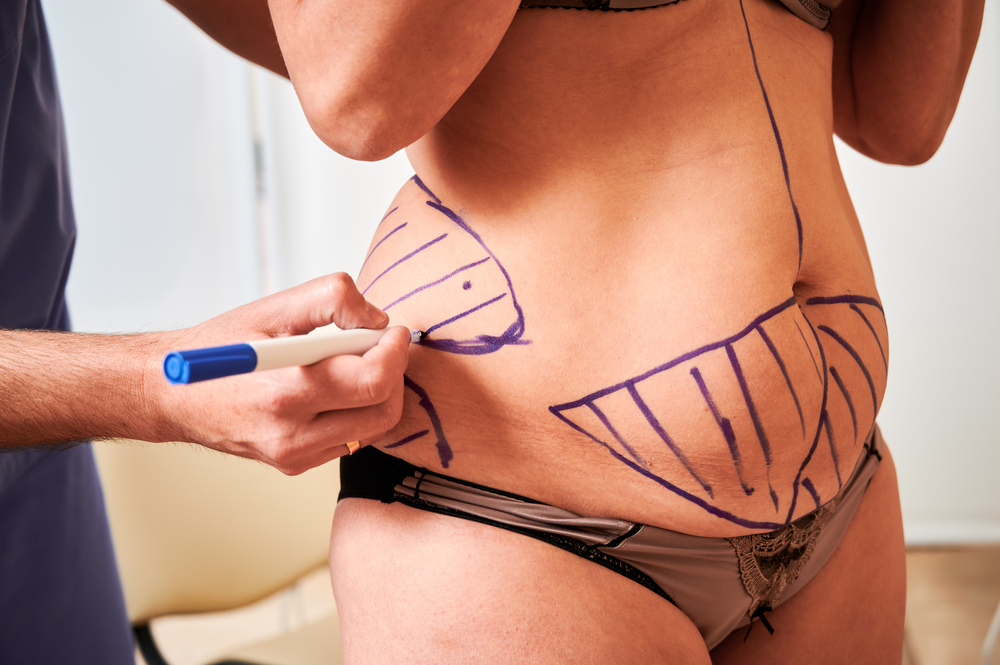Breast augmentation is a common cosmetic surgery that uses either breast implants or fat to increase the size of your breasts. There are a variety of breast implants and surgical procedures available, so it’s very important to ask your surgeon about what would be optimal for you.
Table of Contents
ToggleWhat Is Breast Augmentation?
Breast augmentation is a surgical procedure that increases the size of your breasts using either implants or fat.
Are There Different Kinds Of Breast Augmentation?
Yes, there’s two main types of breast augmentation: breast implants and fat transfer augmentation. Although these two are the main categories, it’s important to note that there are different options based on how you want your breasts to look and feel. Implants and fat can be used individually or together in a “hybrid” augmentation.
The breast implants available in the US have all been extensively tested and cleared by the FDA for use as medical devices. The FDA does place age restrictions on the use of breast implants, and thus it is important to carefully review your options with your board-certified plastic surgeon. By doing so, they can walk you through the pros and cons of each option, and answer all your questions.
Breast augmentation using implants is the most common approach to augmentation. Implant options include:
- Silicone Breast Implants: These implants are made from a silicone shell and a silicone gel filling. Most people believe that silicone breast implants look and feel more like actual breast tissue. Silicone breast implants are available to people age 22 and older for augmentation. They are available at any age for breast reconstruction.
- Saline Breast Implants: These implants use a silicone shell and are filled with sterile saline (salt water). They’re inserted into the breast cavity and then filled with saline. Saline breast implants are available to people ages 18 and older to make your breasts larger.
- Round Breast Implants: Round implants are the most commonly used shape of implant. They make breasts look fuller. Since the implants are round, they usually won’t change the shape of the breast with movement.
- Structured Saline Breast Implants: These implants include sterile saline (salt water) and have an inner structure that helps the implant feel more natural.
- Form-Stable Breast Implants: Also referred to as “gummy bear” breast implants, these implants have a textured outer shell and a thicker silicone gel. They are firmer than traditional implants and require a longer surgical incision in your skin.
- Smooth Breast Implants: These implants are the softest of all implants due to the thinness of the shell. Smooth breast implants usually can look and feel more natural than other implants.
- Textured Breast Implants: These implants create scar tissue to adhere to the implant, which makes them less likely to move around inside of your breast. Breast implant-associated anaplastic large cell lymphoma (BIA-ALCL), though rare, occurs most frequently in people who have breast implants with textured surfaces.
Fat Transfer Breast Augmentation: In a fat transfer breast augmentation, your surgeon will use liposuction to harvest fat from another area of your body and then inject that fat into your breasts. This type of augmentation is usually for people who want a relatively small increase in their breast size usually around a cup size.
Typically, your surgeon will take fat tissue from one of the following areas:
- Abdomen
- Hips and Flanks
- Back.
- Thighs.
Is Breast Augmentation A Common Surgery?
Very common. It is the second most commonly performed plastic surgery procedure behind liposuction. Annually, around 300K people have breast augmentation surgery in the United States alone. Dr. Andrew Gear has performed over 2K breast augmentation surgeries while in Charlotte.
How To Find A Plastic Surgeon?
Finding a plastic surgeon to perform your breast augmentation can be a challenge. Sure, you can go to Google and perform searches, but who should you choose?
You want to go to the best plastic surgeon possible. It’s very important to take your time and do your research. Google Reviews are a good place to start. There are also a number of different platforms that also allow patients to leave reviews such as RealSelf. Simply search for a specific surgeon and location to find these via Google Search.
After that, make sure to closely examine their websites, which should detail training and educational background and surgical philosophy. In addition, make sure to take a hard look at their before, and after images to see if you can find patients with similar anatomy.
You definitely want to make sure your plastic surgeon is board-certified, if they’re not, we recommend finding someone that is right away. Beware of physicians calling themselves “cosmetic surgeons.” These clinicians are typically non-plastic surgeons who have bypassed the formal and rigorous training requirements of becoming a plastic surgeon. They can be anything from a dermatologist to a gynecologist to even a primary care or emergency room doctor. This is not an apples to apples comparison, despite what is stated publicly. Many of these cosmetic surgeons do a formal fellowship, but it lacks the breadth and depth of plastic surgery training. They also typically do not have hospital privileges for the cosmetic procedures they perform.
Many patients are willing to drive a few hours away to find a great breast augmentation surgeon. While you certainly want to search your local area, you should also search other cities or states to find the “right” plastic surgeon for you.
Why Do People Get Breast Augmentations?
Factors Affecting Your Breast Augmentation
There are five major factors to consider with any breast augmentation. Each of these needs to be considered carefully, on their own and in combination with the other factors. The results you desire from your augmentation impacts each of these factors. Sometimes, it makes a decision easy, while other times you may need to balance factors for the best outcome. Let’s look at each factor.
Breast size
The size of your breasts after augmentation is perhaps the most important factor, since it’s the key outcome of augmentation. Some women want an appearance that’s larger than their natural breasts, but still in proportion with the rest of their bodies, while others prefer a size that offers an enhanced hourglass profile. The size you choose can affect the type of implant and surgical technique used, making this decision perhaps the most influential on your procedure.
Breast shape
Implants typically have two shape options. Round implants add volume and have the benefit of maintaining shape, even if the implant itself shifts. A round implant doesn’t remain a sphere, but adapts to your anatomy to take on a natural shape. Contoured breast implants originated for breast reconstruction after mastectomy, but these also prove useful for some cases of breast augmentation.
Incision type
There are four approaches to the incisions needed to augment your breasts. The two most common are called inframammary (under the breast) and periareolar (around the areola, usually the lower half). Less common are the transaxillary approach through the armpit, and the transumbilical method, which uses an incision near your belly button. These two methods use saline implants, the bladders of which are placed before they are filled.
Implant type
Saline and silicone are the most traditional types of breast implants, each with its own pros and cons. The “gummy bear” silicone implant is a newer type of silicone implant that uses a form-stable silicone gel that won’t leak in case of a rupture. This type of silicone implant is generally contoured to mimic breast shape. Fat graft augmentation relocates fat via liposuction from other parts of your body and uses it to augment the natural tissue of your breasts.
Implant texture
Implants come with either a smooth or textured outer surface. The textured surface permits less movement of the implant once it’s in place, which can be important for contoured shapes. Smooth implants have a higher risk of displacement after surgery, but also have a slightly lower rupture rate. The thicker shell of textured implants typically creates a firmer feeling result.
When you’re ready to get started with planning for your breast augmentation, contact Providence Plastic Surgery today by phone or using the online booking tool to arrange your consultation.
How Common Are Breast Augmentations?
Breast augmentation is the most popular type of cosmetic surgery. Every year, around 300,000 people have breast augmentation surgery in the United States.
What Happens At A Consultation For Breast Augmentation?
All of our patients are required to take a breast augmentation consultation prior to surgery. Before you undergo your breast augmentation, you’ll meet with your plastic surgeon.
You should take some time to prepare for your consultation by thinking about what you want to change about your breasts. Remember, you’re not seeking perfection, but improvement. You also want to make sure your mental and physical health are good.
Your surgeon will ask you detailed questions about your medical history, including:
- General questions about your health
- Whether you’re taking medications or not
- Whether you’ve had prior surgeries
- Whether you may be allergic to anything
- Your smoking history.
- Any previous issues you’ve had with your breasts, including lumps, previous mammograms and any family history of breast issues.
While your plastic surgeon will definitely be asking questions, you should also take this time to ask your own questions. Here’s the questions we recommend asking during your breast augmentation consultation:
- Should I get breast implants or have a fat transfer?
- Is breast augmentation surgery right for me?
- What are the pros and cons of breast augmentation?
- What are the pros and cons of the different types of breast implants?
- Do you have before-and-after pictures from the augmentation surgeries you’ve performed?
- Are you a certified plastic surgeon through the American Board of Plastic Surgery?
- How many years have you been a plastic surgeon?
- How many breast augmentation surgeries have you performed?
- Will I be able to breastfeed after breast augmentation?
- What are the risks of my type of augmentation surgery?
- What will happen if I’m not satisfied with the results of my augmentation?
Any Tips Or Advice For Preparing For Breast Augmentation Surgery?
There are a few things that you may need done now as you prepare to have breast augmentation surgery. To get your ready for your breast augmentation surgery, the plastic surgeon may have you:
- Avoid smoking (both tobacco and marijuana)
- Avoid recreational drugs
- Avoid aspirin, some anti-inflammatory drugs
- Get a blood test
- May need adjustments on prescribed medications
- Avoid certain foods or beverages
We can’t stress this enough, if your plastic surgeon gives you instructions to follow, make sure you follow them exactly as described. There’s a reason why you’re given instructions, they will help the surgery go as smoothly as possible, they will also ensure that you heal properly.
Once your breast augmentation surgery procedure is complete, you will need someone to drive you home. We also recommend having someone stay overnight for a new days for the first days after to make sure you have no problems.
As for breast augmentation surgery recovery, you’re going to need on average 3-5 days off from work, so make sure you plan for that. If you have a job where a lot of labor is required, you may need additional days off.
Another tip we recommend after surgery is making sure you have an area of your home dedicated to your recovery. You’ll want to avoid the steps if possible. Also, you may want to consider having:
- Pain medication prescribed by your surgeon and/or acetaminophen
- Ointment or cream for incision sites
- Clean gauze to cover the incision sites
- Plenty of loose, comfortable, button-down blouses or shirts
What Happens During Breast Augmentation Surgery?
During your breast augmentation surgery, there will be a number of different steps involved in breast augmentation surgery. Here’s an explanation of the steps.
Anesthesia
Your surgeon will perform the surgery while you are under anesthesia. This means they will safely put you asleep for the procedure, although some may use IV sedation only. No worries, you and your plastic surgeon will discuss this prior to the surgery.
The Incision
As for the incision, there’s a few different ways this can be done. Your surgeon can perform the procedure:
- Using the crease under your breast – this is called an inframammary fold incision.
- Along the edge of your areola – this is called a periareolar incision.
- Using your armpit – this is called a transaxillary approach.
Your plastic surgeon will discuss these possible methods with you before your surgery, and together you will determine which approach best suits what you need.
Implant Insertion
For inserting implants, there’s two different ways that can be used:
- Under the breast tissue (subfascial or submammary)
- In front or behind the pectoral muscle
There’s a few different factors that determine where your implants will be placed, it will depend on a few factors, such as:
- Breast size
- Breast and tissue thickness
- Implant size and type
- Medical condition
Once again, you’ll have the opportunity to discuss these with your surgeon and make that decision together.
Closing The Incision
Once the surgeon has your implants in place, they will stitch the incision sites together to close them. It’s possible you may need drainage tubes during this time.
Most importantly, make sure you pay attention to your surgeon’s follow-up care instructions for the incision site. This will ensure you heal in the best way possible. Your breasts will be covered with a gauze bandage and you may be sent home wearing a surgical bra.
What Happens After Breast Augmentation?
Once your breast augmentation surgery is complete, you’ll go back to a room for observation while you wake up from the surgery. Once you’re stable, you will be able to leave. This will generally take around an hour or so.
Prior to going home, your surgeon is going to give you detailed instructions for your breast augmentation surgery recovery and schedule a follow-up appointment. Your surgeon will likely give you a prescription for medication to help you ease the pain if needed. If drainage tubes were used, your surgeon will let you know when to come back to have them removed, as well as any other special instructions you may have.
Most people will be able to remove their stitches in 5-7 days. As for heavy lifting, it’s usually recommended not to lift heavy objects for 6 weeks. If you are physically active in sports, it will take up to six weeks before you can return to those activities.
What are the benefits of breast augmentation?
People typically undergo breast augmentation to change the appearance of their breasts.
- Boost confidence
- Boost self-esteem
- Boost appearance
What are the possible complications and side effects of breast augmentation?
As with any surgery, there are side effects, and you do risk certain complications. Side effects of breast augmentation surgery can include:
- Soreness
- Bleeding
- Sensitivity around nipples
- Bruising
- Swelling
Immediate complications of breast augmentation surgery, though rare, can include:
- Infections
- Healing problems
- Hematoma (blood collection in the surgical area)
Complications from breast augmentation surgery that might happen over time can include:
- Formation of scar tissues: This is also known as capsule contracture.
- Sagging of the implants: This can cause your breasts to droop.
- Symmastia: Symmastia happens when your breast implants trend toward the middle of your chest and can give the appearance of one continuous breast.
- Fluid around the implant: This is also known as seroma.
- Implant rupture or deflation: Implants are not designed to be life-long. You might need another procedure later on.
- Breast implant-associated anaplastic large cell lymphoma (BIA-ALCL): This is a cancer of the immune system but one that is very rare, but it has occurred over the years in patients that receive breast implants that have rough or textured surfaces. Symptoms, such as changes in the size or shape of breasts, swelling, or lumps, may show up two to eight years after the implant surgery.
Other important considerations to take into account include:
- Breast implants are not guaranteed to last your entire life. You may need surgery in the future to replace one or both implants.
- Pregnancy, weight loss and menopause may affect the appearance of your augmented breasts.
- Breast augmentation surgery could potentially affect your ability to breastfeed.
- If you have breast augmentation you will need to perform regular examinations of your breasts to assess your health. You will also have to see your plastic surgeon regularly so they can evaluate the condition of your breast implants.
It’s very important to do your research before choosing a plastic surgeon. Only get a breast augmentation from a board-certified plastic surgeon.
Is It Possible That Breast Implants Can Affect Cancer Screenings?
Even though all breast tissue is in front of the implant, breast implants can affect self-examinations. You’ll need to become familiar with examining your breasts with the implant in place.
Implants should not interfere with mammography for cancer surveillance. As screening technology has advanced, interference with cancer surveillance is less of an issue.
What Is The Recovery Time For Breast Augmentation?
Everyone’s body is different, so everyone is going to heal differently than others. Due to this, recovery time for breast augmentation surgery can vary depending on the type of breast augmentation you had and your overall health. As a general rule of thumb, full recovery can take around 6-8 weeks.
When Can I Return To Work Or Other Activities After Breast Augmentation?
Your plastic surgeon will give you detailed instructions for your recovery plan and when you can return to physical activities. Please make sure you follow them accordingly.
Most surgeons are going to encourage you to slowly get back to normal. For the first week after surgery, they may recommend light walking and exercising. You will need to avoid intense or jarring physical activities such as running, horseback riding or heavy lifting until you’ve fully recovered. In most cases, surgeons recommend that people who have labor-intensive jobs should wait at least 3-4 weeks before returning to work.
FAQs
Should I see my healthcare provider after a breast augmentation?
Contact your healthcare provider immediately if you’re experiencing any of the following symptoms:
- Abnormal discharge from incision site
- Stitches coming loose
- Feeling uncomfortable breast pain and pressure
- Experiencing a fever
Does insurance cover breast augmentation?
For the majority of cases, breast augmentation is considered elective cosmetic surgery and therefore insurance carriers will not cover the procedure or any necessary follow-up visits. It’s also possible you could see higher premiums for future insurance coverage, others may see no changes at all. It all depends on your specific health insurance.
Insurance might not cover the procedure should you want your implants removed in the future, so do keep that in mind.
However, if you are having implants put in as part of reconstructive surgery, your insurance carrier may provide coverage. It’s very important that you find out well in advance of your surgery what type of coverage your carrier may provide.
See if your insurance will pay for your surgery. We offer several alternatives to help you get your breast augmentation surgery.
Can I Breastfeed With Breast Augmentation?
Every woman is different, but breast augmentation surgery can affect the nerves and ducts within your breast. Due to this, it’s possible that this could affect lactation. Breast implants that are placed below your muscle usually affect milk production less than implants that are above your muscle. Surgical incisions around your areola are more likely to cause reductions in milk production. If you’re planning on breastfeeding in the future, make sure to let your plastic surgeon know before you get your breast augmentation procedure.
Is Breast Augmentation Reversible?
What happens if you want to reverse your breast augmentation surgery? Is it an option?
Yes, your plastic surgeon can remove your implants through breast implant removal surgery. Since breast implants are not guaranteed to last a lifetime, many people who’ve had breast implant surgery will need another breast implant procedure in the future. These procedures include:
- Removing original breast implants to replace them with new implants
- Repositioning your current breast implants
- Removing your breast implants without using new implants
What’s The Difference Between Breast Augmentation And Breast Implants?
Breast implants are a type of breast augmentation, which is a surgery that increases the size and shape of your breasts. The other type of breast augmentation is fat transfer breast augmentation.
A note from Dr. Andrew Gear – Board Certified Plastic Surgeon – Charlotte, N.C.
Breast augmentation is a very common plastic surgery procedure with high satisfaction rates. However, it’s important to consider all the risks and possible side effects of having breast augmentation surgery and make a sound size choice that matches your anatomy.
Always make sure you consult with a board-certified plastic surgeon and discuss all of your wants, needs and concerns. Together you’ll decide on the type of augmentation and surgery that works best for you.









